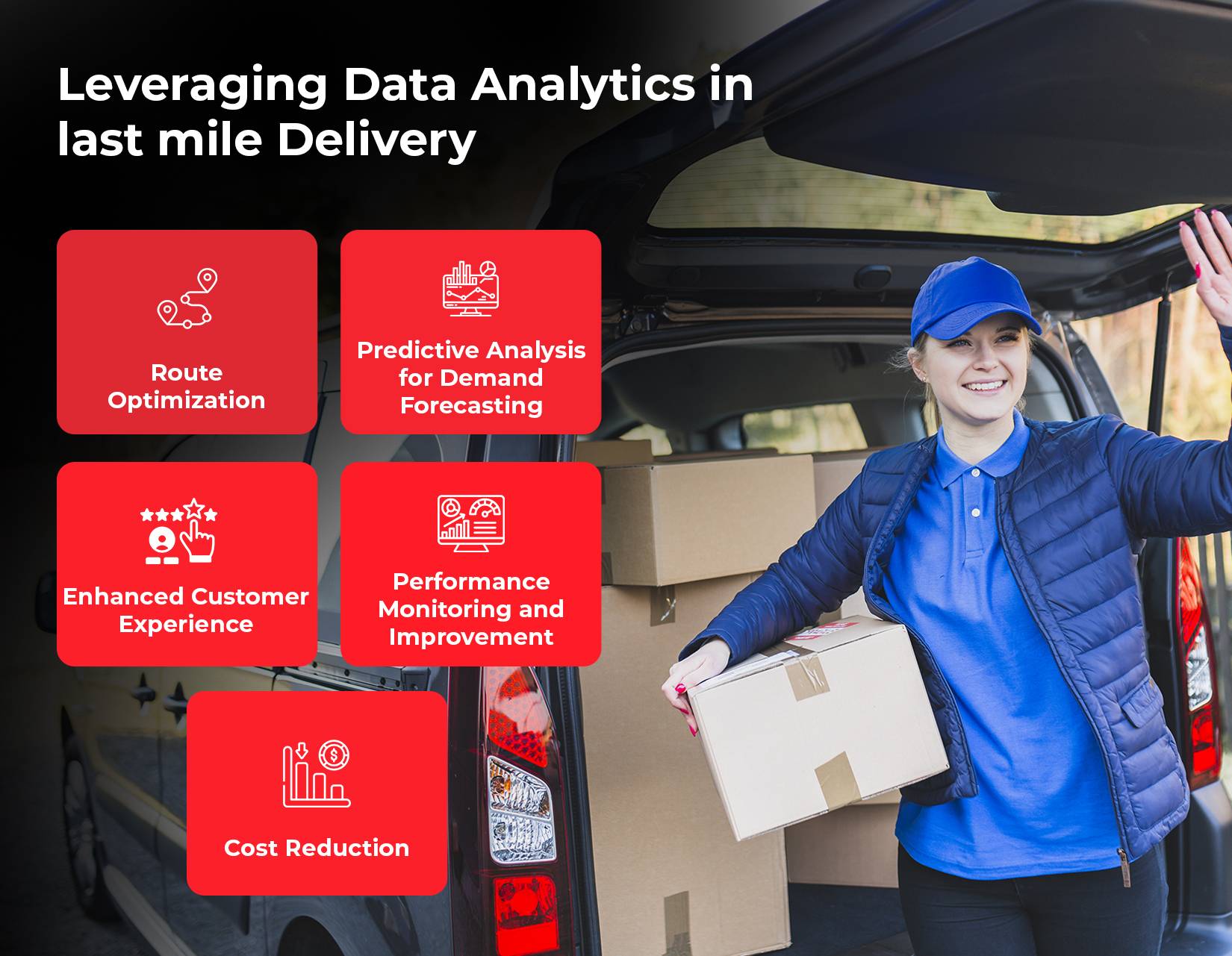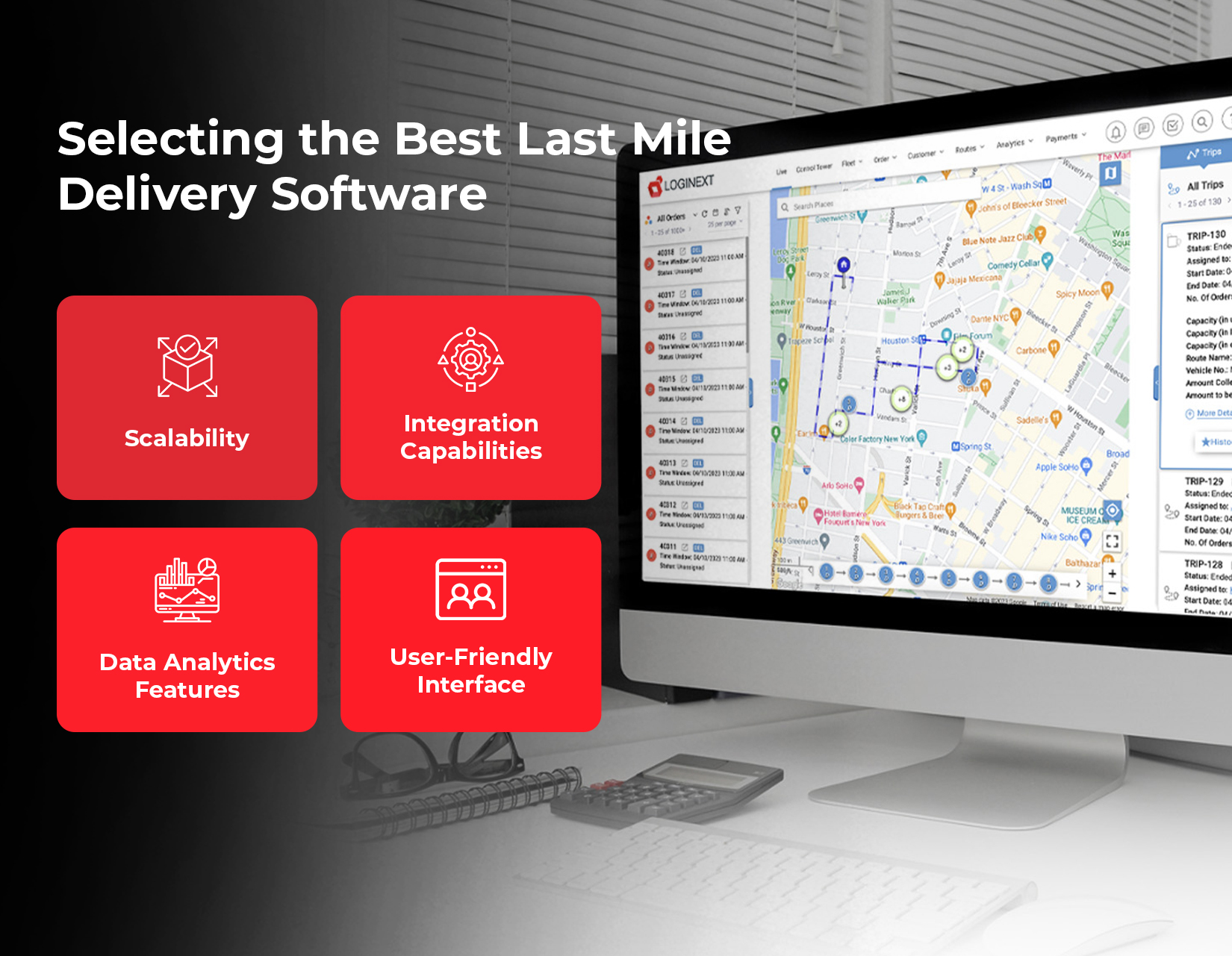
Using Data Analytics to Optimize Your Last Mile Delivery Operations with Software
In today’s fast-paced world, Last Mile Delivery plays a crucial role in ensuring customer satisfaction. It is the final step in the delivery process, where products reach the customer’s doorstep. This stage can significantly impact a business’s reputation, especially in e-commerce and retail. To enhance efficiency and reduce costs, companies are increasingly turning to data analytics and last mile delivery software. This blog explores how data analytics can optimize last mile operations and why adopting the best last mile delivery software is essential.
The Importance of Last Mile Delivery
Last Mile Delivery is often the most challenging and expensive part of the delivery process. According to Capgemini, last mile delivery accounts for 53% of the total shipping costs. With rising customer expectations for faster and more accurate deliveries, companies must find ways to improve their last mile operations. Here is where data analytics and software solutions come into play.
Leveraging Data Analytics in Last Mile Delivery

Data analytics helps businesses make informed decisions by analyzing data from various sources, such as GPS tracking, customer feedback, and delivery times. By integrating data analytics into last mile delivery operations, companies can identify patterns, predict demand, and optimize routes. Let’s dive deeper into how data analytics can transform last mile delivery:
1. Route Optimization:
Data analytics empowers businesses to scrutinize traffic patterns, weather conditions, and historical delivery data to find the most structured delivery routes. Optimizing delivery routes reduces travel time, fuel consumption, and operational costs. It also guarantees timely deliveries, improving customer satisfaction. Last mile delivery software with robust data analytics capabilities can suggest real-time route adjustments based on current conditions, further streamlining the delivery process.
2. Predictive Analysis for Demand Forecasting:
Predictive analytics can help companies forecast demand based on historical sales data, market trends, and seasonal variations. Accurate demand forecasting enables companies to plan their resources effectively, avoiding overstocking or understocking. The best last mile delivery software includes predictive analytics tools that assist in maintaining optimal inventory levels and ensuring timely delivery.
3. Enhanced Customer Experience:
Real-time data on delivery status, accurate estimated delivery times, and proactive communication with customers can significantly enhance the delivery experience. Data analytics allows businesses to provide real-time updates, reducing the uncertainty and anxiety customers often feel during the delivery process. Advanced last mile delivery software management systems can automatically send notifications to customers, improving transparency and trust.
4. Performance Monitoring and Improvement:
Data analytics offers insights into delivery performance by tracking key performance indicators (KPIs) such as delivery time, success rate, and customer satisfaction. Companies can use these insights to identify areas for improvement and implement strategies to enhance their last mile operations. For instance, identifying frequently missed deliveries or delayed routes allows companies to adjust their strategies and improve service quality.
5. Cost Reduction:
Optimizing routes, improving vehicle utilization, and reducing idle time can significantly lower delivery costs. Companies can analyze fuel consumption data and vehicle maintenance records to find cost-saving opportunities. Last mile delivery software equipped with data analytics can help businesses monitor these metrics in real time, providing actionable insights to reduce operational costs.
The Role of Last Mile Delivery Software
Last mile delivery software plays a critical role in optimizing last mile operations. It integrates data from various sources and provides a centralized platform for managing deliveries, drivers, and customers. Here’s how the best last mile delivery software contributes to operational efficiency:
1. Automated Route Planning:
Advanced algorithms consider multiple variables to create optimal delivery routes, minimizing delivery times and reducing fuel costs.
2. Real-Time Tracking:
Provides live tracking of deliveries and vehicles, ensuring transparency and enabling quick response to any disruptions.
3. Driver Management:
Offers features for assigning and managing drivers, tracking their performance, and ensuring compliance with regulations.
4. Customer Communication:
Enhances customer satisfaction through automated notifications and real-time updates on delivery status.
Selecting the Best Last Mile Delivery Software

Choosing the right last mile delivery software is crucial for businesses aiming to enhance their last mile operations. Here are some factors to consider:
1. Scalability:
The software should scale with your business growth, handling increasing delivery volumes without compromising performance.
2. Integration Capabilities:
It should integrate seamlessly with existing systems, such as warehouse management and customer relationship management (CRM) systems.
3. Data Analytics Features:
Look for software with robust data analytics capabilities to gain actionable insights and drive continuous improvement.
4. User-Friendly Interface:
The software should be easy for drivers and managers to use, reducing the learning curve and improving operational efficiency.
Real-World Impact of Last Mile Delivery Software
Many companies have successfully optimized their last mile operations using data analytics and last mile delivery software. For example, Amazon’s use of sophisticated algorithms and real-time data analytics has enabled them to offer same-day or next-day delivery services, setting a benchmark in the e-commerce industry. According to a McKinsey report, companies that leverage data-driven decision-making are 23 times more likely to acquire customers and 19 times more likely to be profitable.
FAQs
1. What is the last-mile tracking system?
A last-mile tracking system monitors the final delivery stage from the transportation hub to the customer’s location, providing real-time updates to ensure timely and accurate deliveries.
2. How much does last-mile delivery cost?
Last-mile delivery costs vary but typically range from $7 to $20 per delivery, depending on factors like distance, location, delivery speed, and shipment size.
3. How do I optimize my last mile delivery?
Optimize last-mile delivery by using route planning software, implementing real-time tracking, consolidating deliveries, and employing automated dispatch systems.
4. What are the key success factors of last-mile delivery?
Key success factors include efficient route planning, real-time tracking, delivery flexibility, effective communication, and customer satisfaction.
5. What companies provide reliable last mile delivery solutions?
Reliable last-mile delivery solution providers include LogiNext Mile, Locus, FarEye, Shipsy, Onro, ClickPost, TrackPOD and OnFleet.
Conclusion
Data analytics and last mile delivery software have revolutionized how companies manage their last mile operations. By leveraging data to optimize routes, predict demand, enhance customer experience, and reduce costs, businesses can stay competitive in an increasingly demanding market. As customer expectations continue to rise, investing in the best last mile delivery software and integrating data analytics into your operations is more critical than ever. Start optimizing your last mile operations today to improve efficiency, reduce costs, and enhance customer satisfaction.
Are you ready to transform your last mile delivery operations with data analytics? Invest in the LogiNext Mile- best last mile delivery software today and stay ahead of the competition. Click on the red button below to book a demo with us to learn more about how our solutions can help you achieve operational excellence.
75







@LogiNext